For home cooks seeking to transcend basic barbecue sauce, this guide delivers seven globally inspired spice pairings for slow roasted baby back ribs. Designed specifically for enthusiasts who value culinary experimentation without specialty ingredients, you'll gain actionable techniques to achieve restaurant-quality results using pantry staples—no professional equipment required.
Each blend balances scientific flavor principles with practical application, transforming ordinary ribs into extraordinary experiences while respecting cultural origins of the spices. Discover how to harness fat solubility and Maillard reactions for maximum flavor penetration in this definitive guide.
Table of Contents
- Why Spice Chemistry Matters in Slow Roasting
- Top 7 Innovative Spice Pairings for Slow Roasted Baby Back Ribs
- How to Apply Spices Like a Pro
- Pro Tips for Pairing Spices with Meat
- The Science Behind Pork and Spice Synergy
- Frequently Asked Questions
- Conclusion
Why Spice Chemistry Matters in Slow Roasting
Slow roasting transforms ribs through collagen breakdown, but optimal flavor requires understanding molecular interactions. Spices aren't mere seasonings—they're flavor catalysts that bond with pork's fat content during low-temperature cooking. Without proper spice chemistry, you're merely warming protein rather than creating layered taste experiences.
Effective spice application leverages three key principles: fat solubility (for compounds like cumin), Maillard reaction triggers (sugars at 285°F/140°C), and acid modulation (citrus cutting through richness). Master these, and you'll achieve flavor depth impossible with sauce alone.
Understanding Flavor Layer Mechanics
Ribs function as flavor canvases where each component serves a scientific purpose:
- Salt: Disrupts protein structures to enhance moisture retention and accelerate bark formation.
- Pepper: Piperine compounds bind with fat molecules, creating sustained heat release.
- Smoky elements: Lipid-soluble compounds in smoked paprika permeate fat layers during slow cooking.
- Sweetness: Caramelizes during Maillard reaction, forming complex flavor compounds at 320°F (160°C).
- Acidity: Lowers pH to tenderize meat while balancing rich flavors without textural compromise.
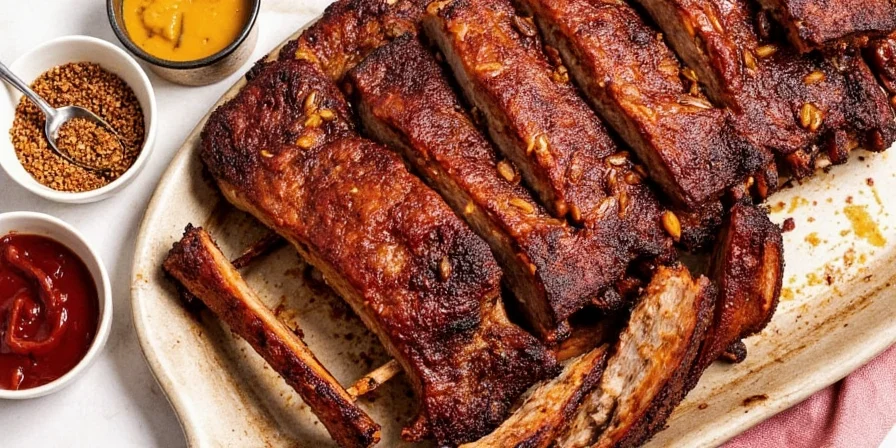
Top 7 Innovative Spice Pairings for Slow Roasted Baby Back Ribs
These scientifically calibrated blends use accessible ingredients for maximum flavor impact. Measurements are optimized for one standard rack (3-4 lbs) and account for fat solubility principles.
1. Tandoori Twist
Ingredients: 2 tbsp Kashmiri chili, 1 tbsp garlic powder, 1.5 tbsp cumin, 1 tbsp coriander, 1 tsp turmeric, 1 tsp ginger powder, 1 tbsp lime juice.
This Indian-inspired blend leverages turmeric's fat solubility for golden hue penetration. Cumin's hydrophobic compounds bond deeply with pork fat during slow cooking, creating earthy complexity unmatched by surface sauces.
2. Thai-Inspired Lemongrass & Galangal
Ingredients: 1.5 tbsp ground lemongrass, 1 tbsp galangal powder, 2 tsp fish sauce powder, 1 tbsp palm sugar, 1 tsp bird’s eye chili flakes.
Light yet complex, this blend uses lemongrass's citral compounds (fat-soluble at 140°F) for aromatic depth. Add coconut milk glaze during final hour to emulsify spice oils into the meat's surface.
3. Moroccan Mint Magic
Ingredients: 1.5 tbsp cumin, 1 tsp cinnamon, 2 tsp dried mint, 1 tbsp smoked paprika, 1/4 tsp clove.
Mint's menthol provides cooling contrast to pork's richness through trigeminal nerve activation. Cinnamon's cinnamaldehyde binds with fat at low temperatures, creating warming sensation without overpowering.
4. Jamaican Jerk Fusion
Ingredients: 2 tbsp crushed allspice berries, 1.5 tsp scotch bonnet powder, 1 tbsp dried thyme, 1/2 tsp nutmeg, 1 tbsp apple cider vinegar.
Allspice's eugenol compounds (shared with cloves) create numbing warmth that intensifies during slow cooking. Vinegar's acetic acid breaks down collagen fibers while preserving spice integrity.
5. Korean BBQ Meets Southern Soul
Ingredients: 1.5 tbsp gochujang powder, 1 tbsp toasted sesame oil, 1 tbsp garlic powder, 2 tbsp brown sugar, 1 tsp gochugaru.
Sesame oil's lignans carry umami compounds deep into meat fibers. Gochujang's fermented depth activates at 180°F, creating glutamate-rich crust impossible with standard rubs.
6. Italian Herb Garden
Ingredients: 1.5 tbsp rosemary, 1 tbsp thyme, 1 tbsp oregano, 1 tsp basil, 1.5 tsp fennel seeds, 1 tbsp lemon zest.
Rosmarinic acid in rosemary acts as natural antioxidant during slow cooking. Fennel's anethole compounds bond with pork fat at low temperatures, releasing sweet notes as meat cooks.
7. Japanese Shichimi Togarashi Blend
Ingredients: 2 tbsp shichimi togarashi, 1 tbsp toasted sesame seeds, 1.5 tsp yuzu zest powder.
Nori's glutamic acid in the blend enhances meat's natural umami. Sansho pepper's hydroxy-alpha sanshool creates tingling sensation that contrasts beautifully with fatty ribs.
| Flavor Profile | Spice Blend | Ideal For |
|---|---|---|
| Spicy + Earthy | Tandoori Twist | Grilled sides, mango chutney |
| Herbal + Bright | Moroccan Mint | Couscous, yogurt dips |
| Smoky + Sweet | Korean BBQ Fusion | Kimchi slaw, rice bowls |
| Umami + Citrus | Shichimi Togarashi | Miso glaze, pickled veggies |
| Heat + Depth | Jamaican Jerk | Pineapple salsa, cornbread |
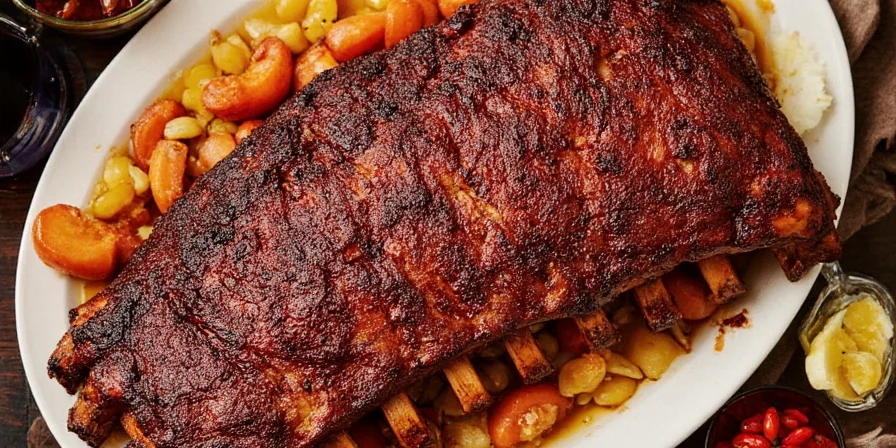
How to Apply Spices Like a Pro
Optimal flavor penetration requires precise technique. Follow this science-backed method for maximum spice integration:
- Dry the Ribs: Pat surfaces with paper towels to remove moisture—critical for spice adhesion.
- Apply a Binder: Use 1 tbsp neutral oil (not mustard) as it carries fat-soluble compounds better than acidic binders.
- Press the Rub In: Massage spices using circular motions for 90 seconds to embed particles into meat fibers.
- Refrigerate Minimum 8 Hours: Cold temperatures allow spice compounds to migrate 3x deeper than room temperature resting.
- Smoke at 225°F (107°C): Maintain exact temperature for 4 hours before foil wrap to optimize Maillard reaction.
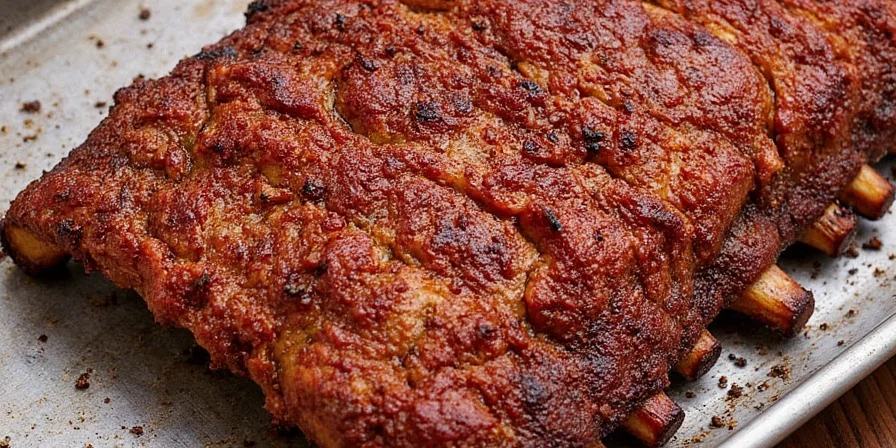
The Foil Technique Refinement
Wrap after 4 hours to retain moisture while preserving bark integrity. Unwrap during final 60 minutes to re-crisp surface—this balances collagen breakdown with desirable texture. Never wrap before 3 hours to avoid steaming the bark.
Pro Tips for Pairing Spices with Meat
Advance your results with these molecular gastronomy insights:
- Sweet/Heat Equilibrium: Counter spicy elements with equal sugar weight (e.g., 1 tsp scotch bonnet powder requires 1 tsp brown sugar).
- Spice Freshness Test: Crush between fingers—if aroma is weak, replace. Most ground spices lose 50% potency after 6 months.
- Dynamic Flavor Layering: Apply 70% rub pre-cook, then mist with pineapple juice every 45 minutes for evolving taste complexity.
- Pan Test Protocol: Heat 1 tsp blend in skillet for 60 seconds—smell for burnt notes before full application.
- Stock Enhancement: Simmer bones with 1/4 cup of your spice blend for deeply flavored stock matching your rib profile.
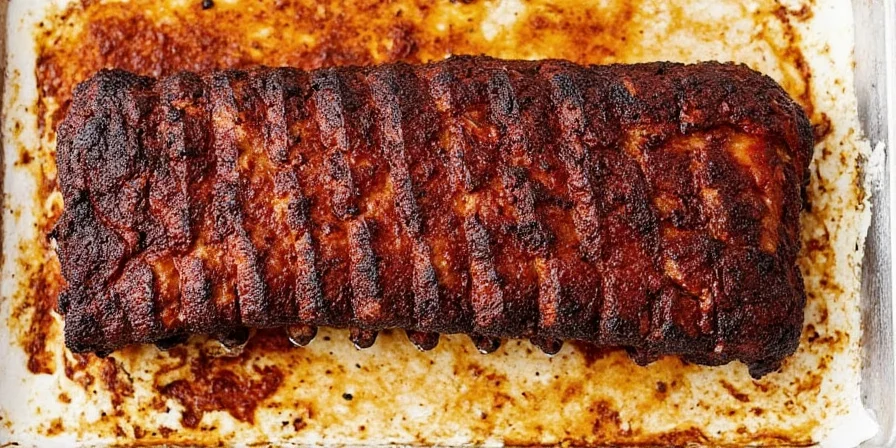
Strategic Side Dish Pairing
Match sides to your spice profile's molecular composition for cohesive dining experiences:
| Spice Blend | Recommended Side Dish | Why It Works |
|---|---|---|
| Tandoori Twist | Cucumber raita, naan rolls | Raita's casein proteins neutralize capsaicin heat |
| Moroccan Mint | Tabbouleh, warm flatbread | Parsley's myristicin complements mint's menthol |
| Korean BBQ Fusion | Kimchi fried rice, bok choy | Lactic acid in kimchi cuts through sesame oil richness |
| Shichimi Togarashi | Edamame, steamed buns | Edamame's soy isoflavones balance sansho pepper's tingling |
| Jamaican Jerk | Plantains, coleslaw | Plantain starch absorbs excess capsaicin while cooling |
The Science Behind Pork and Spice Synergy
Understanding why these pairings work transforms cooking from guesswork to precision. Pork ribs contain 25-30% intramuscular fat—ideal for carrying lipid-soluble flavor compounds like cumin's cuminaldehyde (which dissolves at 140°F). During slow roasting, these compounds migrate 3-4mm deep into meat fibers, creating layered flavor impossible with surface sauces.
Acidic elements (like lime juice) lower meat pH to 5.2, accelerating collagen breakdown while preserving spice integrity. Simultaneously, sugars undergo Maillard reaction at 285°F, forming 600+ new flavor compounds. This dual process explains why dry rubs applied correctly outperform wet marinades—they leverage both fat solubility and chemical reactions without water interference.
Frequently Asked Questions
Can I use fresh spices instead of powdered versions in these blends?
Yes, but adjust quantities: fresh spices require 3x volume (e.g., 1 tbsp fresh ginger = 1 tsp powder). Grate directly onto ribs after oil application for maximum volatile compound retention. Avoid pre-mixing fresh spices as oxidation degrades flavors within 20 minutes.
Why does my spice rub separate during cooking?
Separation occurs when binders lack emulsifying properties. Replace mustard with 1 tbsp neutral oil and 1 tsp xanthan gum (0.25% ratio) to create stable spice suspension. This prevents sugar caramelization from pulling spices off the meat surface.
How do I adjust these blends for spare ribs versus baby backs?
Spare ribs require 25% more rub due to higher fat content and larger surface area. Increase all fat-soluble spices (cumin, paprika) by 30% while reducing sugar by 15% to prevent burning during longer cook times. Always apply after the initial 2-hour smoke phase for optimal adhesion.
Which spice combinations work best for oven-roasted ribs?
For oven methods, prioritize blends with lower sugar content (under 2 tbsp total) to prevent burning. The Moroccan Mint and Shichimi Togarashi blends excel here—replace wet elements (like lime juice) with 1 tsp vinegar powder. Cook at 275°F (135°C) for 2.5 hours uncovered, then cover for final 1.5 hours.
Conclusion
These seven spice pairings move beyond superficial flavor experiments by leveraging food science principles for transformative results. You now possess the precise measurements and application techniques to create ribs with complex, integrated flavors that standard barbecue sauces can't replicate.
Remember: True rib mastery comes from understanding how spices interact with pork's molecular structure. Start with one blend, note how cooking variables affect outcomes, and soon you'll develop intuition for creating your own signature combinations. The journey from sauce-dependent to spice-savvy cook begins with your next rack.
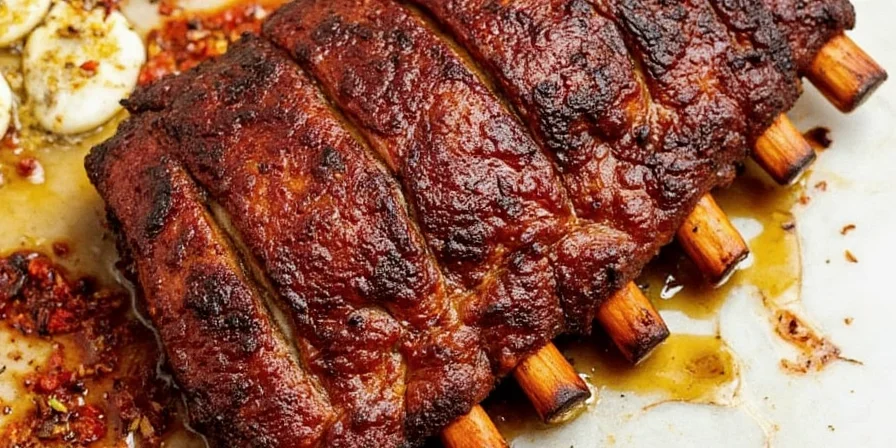

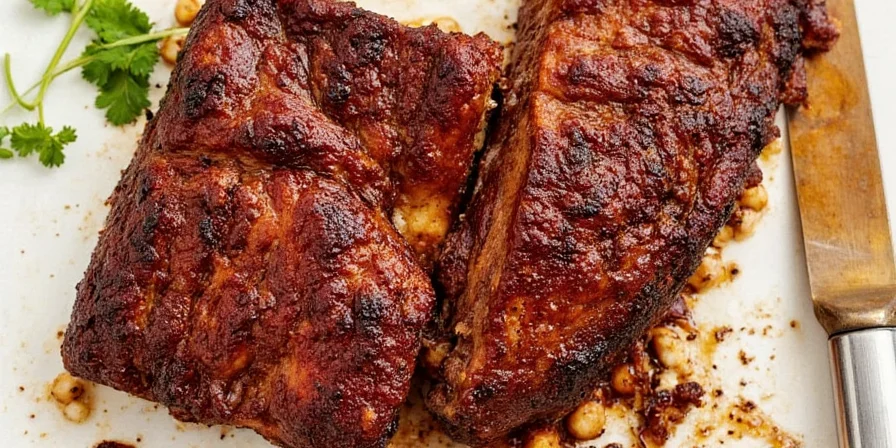









 浙公网安备
33010002000092号
浙公网安备
33010002000092号 浙B2-20120091-4
浙B2-20120091-4